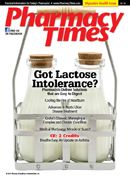Publication
Article
Pharmacy Times
Self-Treatment with OTC Antiemetics
Author(s):
Occasional nausea and vomiting can be prevented and treated with OTC therapy.
Occasional nausea and vomiting can be prevented and treated with OTC therapy.

For an individual experiencing episodes of nausea and vomiting, finding immediate relief is a top priority. OTC products for the treatment of nausea and vomiting include antihistamines, bismuth subsalicylate, antacids, histamine2 (H2)- receptor antagonists, and phosphorated carbohydrate solution.
Various nonpharmacologic products, such as Sea-Band and BioBands wristbands, which use the principles of acupressure, are also available for the treatment of nausea and vomiting. Acupressure wristbands are indicated for relief of nausea, vomiting, motion sickness, and overeating.1 In addition, a host of complementary/alternative products, such as ginger, peppermint, chamomile, and other botanical products, are also often used for the treatment of nausea and vomiting.1
OTC products should only be used to prevent or treat the symptoms of mild, occasional, self-treatable episodes of nausea and vomiting. Patients experiencing severe nausea and vomiting should be referred for further medical evaluation. Factors to consider when selecting an OTC product include the age of the patient, whether patient is pregnant or lactating, other medical conditions, and the patient’s current medication profile.
PHARMACOLOGIC THERAPY
OTC antihistamines indicated for the prevention and treatment of nausea, vomiting, and dizziness associated with motion sickness include meclizine, cyclizine, dimenhydrinate, and diphenhydramine (Table 1). Patients should be advised to take these products at least 30 to 60 minutes before travel to allow sufficient time for onset of action. During counseling, they should also be made aware of the possible adverse effects associated with the use of these products, such as drowsiness, blurred vision, dry mouth, and urinary retention. Patients with certain medical conditions, such as asthma, narrow angle glaucoma, or benign prostatic hypertrophy, should be counseled not to use these products unless directed by their physician. 1 Patients should be cautioned about the increased sedative effect that may occur when antihistamines are used in conjunction with central nervous system depressants, such as alcohol, tranquilizers, and hypnotics. The use of antihistamines may cause paradoxical stimulation and agitation in the pediatric population, as well as confusion among geriatric patients.1
Table 1: Examples of OTC Antiemetic Products
Brand Name
Active Ingredient, Strength
Bonine Original Tablets
Meclizine HCl 25 mg
Bonine for Kids Tablets
Cyclizine HCl 25 mg
Dramamine Chewable Tablets
Dimenhydrinate 50 mg
Dramamine Less Drowsy Formula Tablets
Meclizine HCl 25 mg
Emetrol Cherry Flavored Liquid
Per 5 mL: phosphoric acid 21.5 mg, dextrose 1.87 g, fructose 1.87 g
Marezine for Motion Sickness Tablets
Cyclizine 50 mg
Nauzene Liquid
Per 15 mL: dextrose 4.35 g, levulose 4.17 g, sodium citrate dihydrate 0.921 g
Triptone for Motion Sickness
Dimenhydrinate 50 mg
In some cases, nausea and vomiting can be attributed to excessive or disagreeable food or beverage ingestion. Often products such as antacids, H2-receptor antagonists, bis- muth subsalicylate, and phosphorated carbohydrate solution can be used to relieve the symptoms of nausea associated with food overindulgence.1 Phosphorated carbohydrate solutions can also be used to relieve symptoms of nausea and vomiting associated with upset stomach caused by viral gastroenteritis and motion sickness.1 Patients should be advised to take the recommended dosage at 15-minute intervals until symptoms subside, not to exceed 1 hour or >5 doses. To maximize the effectiveness of this product, it should not be diluted.1,2 Due to the high fructose and glucose content, patients with hereditary fructose intolerance and diabetes should not use phosphorated carbohydrate solutions.1,2
KEY COUNSELING POINTS
Although many cases are mild and selftreatable, nausea and vomiting can sometimes be attributed to or an indication of a more serious medical condition, such as intestinal blockage, appendicitis, or migraine headaches.1,3 Individuals with chronic medical conditions should always be referred to their physician for the management of nausea and vomiting. Therefore, prior to recommending any of these OTC products, it is imperative for pharmacists to ascertain if self-treatment is appropriate. Pharmacists should ensure that patients clearly understand the proper use of these OTC products and seek immediate medical care if the nausea and vomiting are prolonged (lasting longer than 24-48 hours) or if symptoms worsen. When appropriate, pharmacists should also encourage patients to drink clear liquids, such as electrolyte replacement solutions, and maintain adequate fluid intake to avoid possible dehydration. Pregnant or lactating women experiencing nausea and vomiting should always consult their physician prior to using any medication.
Pharmacists are also in a unique position to help select products for pediatric patients, because children aged 2 years and younger should not use antihistamine products, such as dimenhydrinate and diphenhydramine. Cyclizine should not be used by children younger than 6 years of age, and meclizine and bismuth subsalicylate should not be used by children younger than 12 years of age.1
Prior to recommending any products, pharmacists should screen for possible contraindications and drug interactions in individuals with preexisting medical conditions and those currently taking any other medications. These patients should be encouraged to consult their primary health care provider prior to using any of these products. Because possible dehydration and electrolyte imbalance are common concerns with episodes of vomiting, especially among pediatric patients, patients should be aware of the signs of dehydration and be encouraged to seek medical attention when warranted.
Table 2: Examples of Exclusions for Self-Treatment of Nausea and Vomiting
- Any signs of abdominal pain or distention
- Any sign of dehydration, such as lethargy and decrease in urine output
- Blood in vomit
- Changes in the level of alertness, mental clarity, or behavior
- Difficulty breathing and episodes of tachycardia
- Nausea and vomiting associated with chemotherapy/radiation therapy or other metabolic disorders
- Prolonged vomiting lasting more than 24 hours, especially in children
- Recent head trauma
- Suspected poisoning
- Suspected pregnancy
- Vomiting accompanied by any of the following: fever, diarrhea, severe headache, stiff neck
Adapted from references 1 and 2.
Table 3: Signs of Dehydration in Children
- Absence of or decreased tear production
- Concentrated urine
- Decreased alertness or signs of lethargy
- Decreased skin turgor
- Decreased urine output
- Dry mouth and tongue
- Excessive thirst
- Rapid heartbeat
- Sunken eyes
Adapted from references 1 and 2.
Ms. Terrie is a clinical pharmacy writer based in Haymarket, Virginia.
References
- McWhorter, Laura Shane, and Oderda Lynda. Nausea and Vomiting. . In: Berardi R, Newton G, McDermott JH, et al, eds. Handbook of Nonprescription Drugs. 16th ed. Washington, DC: American Pharmacists Association: 2009:335-353.
- Emetrol Product Information. WellSpring Pharmaceutical Web site. www.emetrol.com/directions.html. Accessed May 8, 2010.
- Nausea and Vomiting, Medline Plus ( Service of United States National Library of Medicine and the National Institutes of Health Web site. www.nlm.nih.gov/medlineplus/ency/article/003117.htm. Accessed May 7, 2010.







